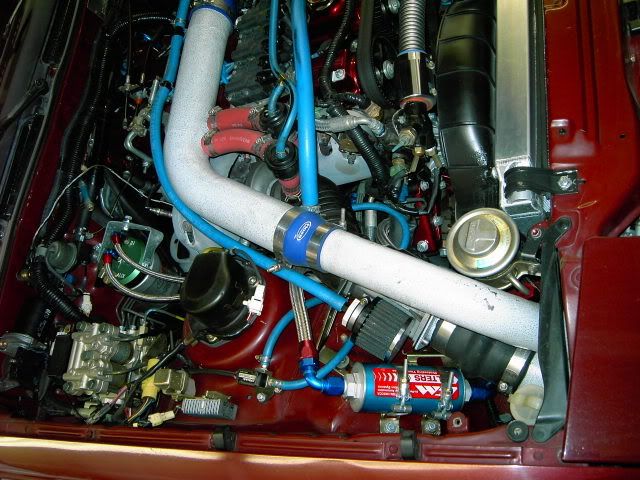Adjuster
Supramania Contributor
I coated the bearings too IJ. 
Two reasons.
1) To decrease the clearance as much as possible w/o causing a wear problem.
2) To protect them in the case when there is contact with the crank journals as a last line of defense against wear.
The more metal to metal contact you have, the larger the bearing clearance becomes and the more likely you are to have the oil displaced at lower pressures, so you get acclerated wear at idle with worn out bearings where the oil just leaks out v/s being held in place and doing it's job.
Other idea is using the best oil you can, in a nice thick weight. (Less likely to be sheared off, and better oils have better anti wear additives like zinc that tends to protect the bearings when the journal comes calling.)
I think the best oil for the money here in the States is Shell Rotella T Synthetic from Wall Mart. (You can buy it in 1 gal. containers for about 15.00 each.) This oil is formulated for long haul semi truck diesel motors, holds up to high temps your turbo engine will subject it to, has plenty of zinc and other additives to protect your engine from wear, and being a pure synthetic, will not break down or form sludge as easy as the blended oils out there. (Mobile one is another good choice, but is more money, and has less addtives so it can be "cat" safe on gas cars.)
I found this stuff looking for a good oil for my KTM motorcycle. Excellent stuff, and I've changed over to this from Mobile one in all my cars too. (higher oil pressure at idle is just one benefit, better soot control, corrosion resistance and other positive features override any concerns about clogging up a cat with excess burned off zinc over time.)
Interesting oil reading. http://www.xs11.com/stories/mcnoil94.htm
More interesting info. http://motorcycleinfo.calsci.com/Oils1.html
Two reasons.
1) To decrease the clearance as much as possible w/o causing a wear problem.
2) To protect them in the case when there is contact with the crank journals as a last line of defense against wear.
The more metal to metal contact you have, the larger the bearing clearance becomes and the more likely you are to have the oil displaced at lower pressures, so you get acclerated wear at idle with worn out bearings where the oil just leaks out v/s being held in place and doing it's job.
Other idea is using the best oil you can, in a nice thick weight. (Less likely to be sheared off, and better oils have better anti wear additives like zinc that tends to protect the bearings when the journal comes calling.)
I think the best oil for the money here in the States is Shell Rotella T Synthetic from Wall Mart. (You can buy it in 1 gal. containers for about 15.00 each.) This oil is formulated for long haul semi truck diesel motors, holds up to high temps your turbo engine will subject it to, has plenty of zinc and other additives to protect your engine from wear, and being a pure synthetic, will not break down or form sludge as easy as the blended oils out there. (Mobile one is another good choice, but is more money, and has less addtives so it can be "cat" safe on gas cars.)
I found this stuff looking for a good oil for my KTM motorcycle. Excellent stuff, and I've changed over to this from Mobile one in all my cars too. (higher oil pressure at idle is just one benefit, better soot control, corrosion resistance and other positive features override any concerns about clogging up a cat with excess burned off zinc over time.)
Interesting oil reading. http://www.xs11.com/stories/mcnoil94.htm
More interesting info. http://motorcycleinfo.calsci.com/Oils1.html

